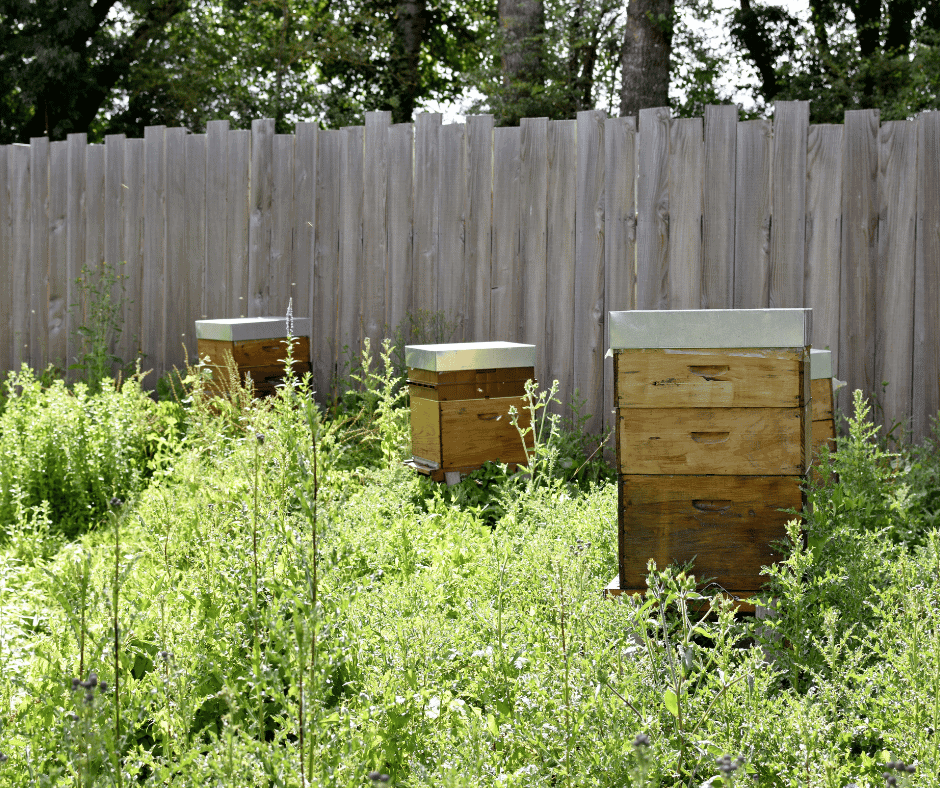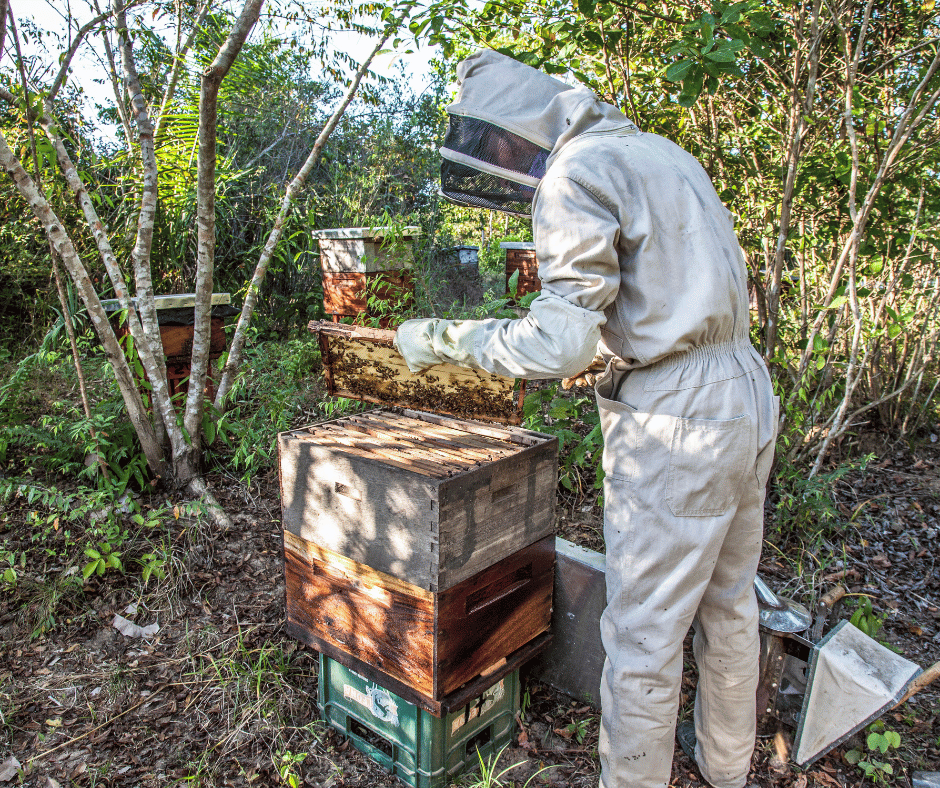
Bees play a vital role in our ecosystem, and their survival is crucial for the pollination of plants and the growth of fruits, vegetables, and seeds. However, bees are also vulnerable to extreme weather conditions, particularly cold temperatures. As winter approaches, many beekeepers and enthusiasts are left wondering, what temperature is too cold for bees?
Without bees, many of our favorite foods and natural resources would be threatened. In addition, bees also play a crucial role in maintaining biodiversity and keeping ecosystems in balance. It is estimated that around 1/3 of the world’s food supply depends on pollinators like bees.
The purpose of this blog post is to discuss the ideal temperature range for bees and what constitutes as “too cold” for them. Understanding the temperature tolerance of bees is crucial for protecting and preserving these important insects.
This post will provide a comprehensive guide on the ideal temperature range for bees, the impact of extreme cold on bees, and steps that can be taken to protect bees during extreme cold.
Table of Contents
Temperature Range for Bees

The ideal range for bee survival:
The ideal temperature range for bees is between 60-90 degrees Fahrenheit. Within this range, bees can comfortably forage for nectar and pollen, and also maintain their hive’s temperature at a suitable level for their colony.
The optimal temperature for bees inside the hive is around 93 degrees Fahrenheit, which allows them to maintain the optimal temperature for the growth of their colony and the development of their young.
However, it’s worth noting that bees can tolerate a wide range of temperatures, and in some cases, bees can survive temperatures as low as 40 degrees Fahrenheit and as high as 110 degrees Fahrenheit, but the ideal range for their survival is between 60-90 degrees Fahrenheit.
Impact of temperatures below freezing on bees:
When temperatures drop below freezing, it can become difficult for bees to survive. Freezing temperatures can cause a number of problems for bees. For one, it makes it difficult for bees to fly, which makes it impossible for them to forage for food.
This can lead to starvation and death. In addition, extreme cold can also cause the bees’ wings to become brittle, making it difficult for them to fly even when temperatures rise again.
Furthermore, freezing temperatures can also damage the bees’ comb, which is the structure of the hive where they live and store their honey. If the comb is damaged, it becomes difficult for the bees to maintain the hive’s temperature.
This can lead to the death of the colony as the bees are unable to maintain the appropriate temperature for their survival.
Impact of Extreme Cold on Bees

The difficulty for bees to fly and forage for food:
As mentioned earlier, when temperatures drop below freezing, bees are unable to fly and forage for food. This can lead to starvation and death. During the winter months, bees huddle together inside their hive to keep warm, relying on the stored honey as their source of food.
But if the cold is prolonged or the bees are unable to find enough food before the winter, they may not have enough stored honey to survive. This can lead to starvation and ultimately the death of the colony.
Additionally, the extreme cold can also make it difficult for bees to access the flowers and plants that provide nectar and pollen, which are their main food source. This lack of access to food can also lead to starvation and death.
Brittle wings and damaged comb:
Another impact of extreme cold on bees is that it can cause the bees’ wings to become brittle. This makes it difficult for the bees to fly, even when temperatures rise again.
The wings of bees have a complex structure and are made of a protein called chitin, which can become brittle when exposed to freezing temperatures. This can make it difficult for the bees to fly and forage for food, leading to starvation and death.
Furthermore, the comb of the hive, where the bees live and store their honey, can also be damaged by freezing temperatures.
How to Protect Bees During Extreme Cold

Insulated hives:
One of the most effective ways to protect bees during extreme cold is to provide them with an insulated hive. Insulating the hive can help to maintain a suitable temperature inside the hive, even when temperatures outside drop below freezing.
This can be done by adding insulation materials such as straw, sawdust, or even foam insulation, to the outside of the hive. Additionally, placing the hive in a sheltered location, such as a grove of trees or near a building, can also help to protect the bees from extreme cold.
Sugar syrup or fondant as a food source:
Providing bees with a food source during the winter months can also help to protect them from the cold. One way to do this is to offer a sugar syrup or fondant, which can be placed inside the hive for the bees to feed on. This can help to ensure that the bees have enough food to survive during the winter.
Sheltered location:
As mentioned earlier, placing the hive in a sheltered location, such as a grove of trees or near a building, can also help to protect the bees from extreme cold. This can help to reduce the wind chill factor and provide some protection from freezing temperatures.
Additionally, placing the hive on a south-facing slope can also help to maximize the amount of sunlight the bees receive, which can help to keep the hive warm.
Importance Of Protecting Bees
It is important to protect bees during extreme cold, as they play a crucial role in pollination, which is essential for the growth of fruits, vegetables, and seeds.
Additionally, the decline in bee populations can have a significant impact on our food system and the environment. Therefore, it is crucial to take steps to protect bees during extreme cold, such as providing them with insulated hives, and a food source, and placing the hives in a sheltered location.
We hope that this blog post has provided valuable information on the impact of extreme cold on bees and ways to protect them. We encourage readers to take action to protect bees in their own communities by implementing these strategies or supporting local organizations that work to protect bees. Together, we can help to ensure the survival of these important pollinators and the health of our environment.
Frequently Asked Questions
What is the ideal temperature range for bees?
The ideal temperature range for bees is between 60-90 degrees Fahrenheit. Within this range, bees can comfortably forage for nectar and pollen, and also maintain their hive’s temperature at a suitable level for their colony.
Why is it difficult for bees to survive in extremely cold temperatures?
When temperatures drop below freezing, it becomes difficult for bees to survive as they are unable to fly, which makes it impossible for them to forage for food. Extreme cold can also cause damage to their wings and comb, making it difficult for them to fly even when temperatures rise again.
How can I protect my bees during extreme cold?
There are several ways to protect bees during extreme cold, such as providing them with insulated hives, a food source, and placing the hives in a sheltered location. Additionally, you can reduce the wind chill factor, and place the hives on a south-facing slope to maximize the amount of sunlight the bees receive.
What is the role of bees in pollination?
Bees play a crucial role in pollination, which is the process of transferring pollen from the male parts of a flower to the female parts, allowing the plant to produce fruits, vegetables, and seeds. Pollination by bees and other insects is essential for the growth of many crops, and the decline in bee populations can have a significant impact on our food system.
How can I support local organizations that work to protect bees?
You can support local organizations that work to protect bees by volunteering your time or making a donation to their cause. Additionally, you can also raise awareness about the importance of bees and the need to protect them by sharing information and educational materials with your friends and family, and by participating in events and activities organized by these organizations.



